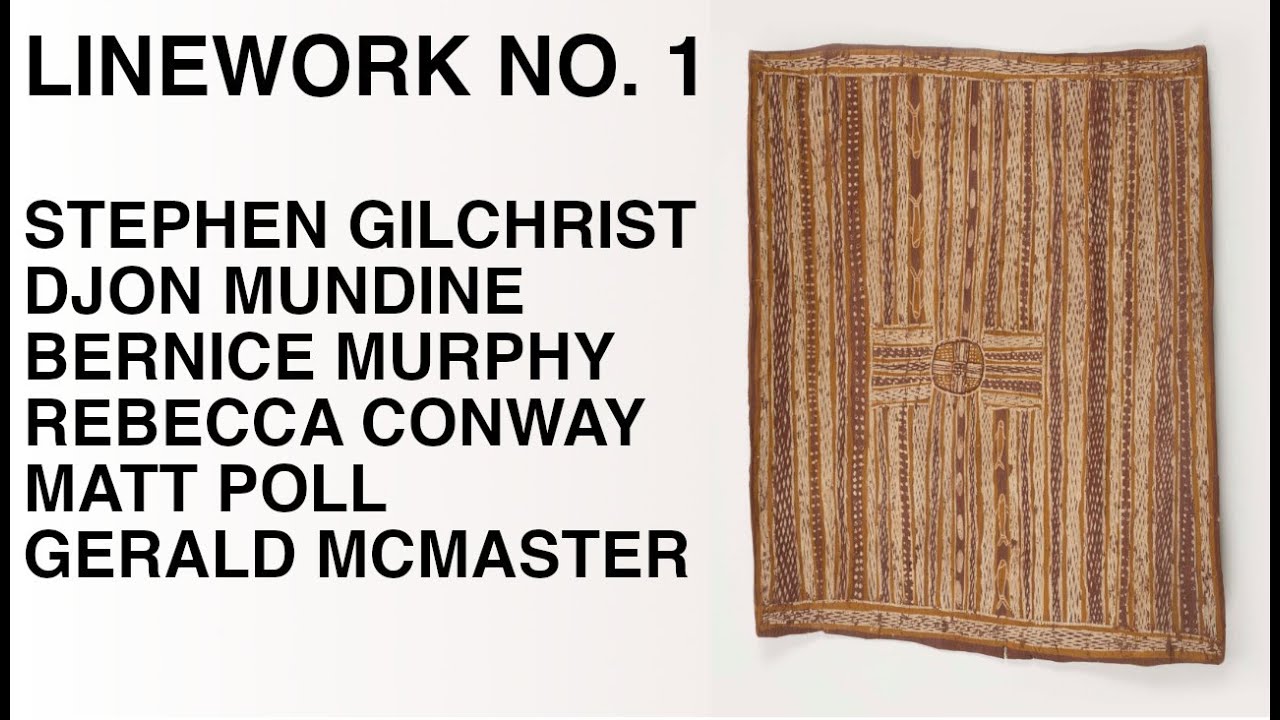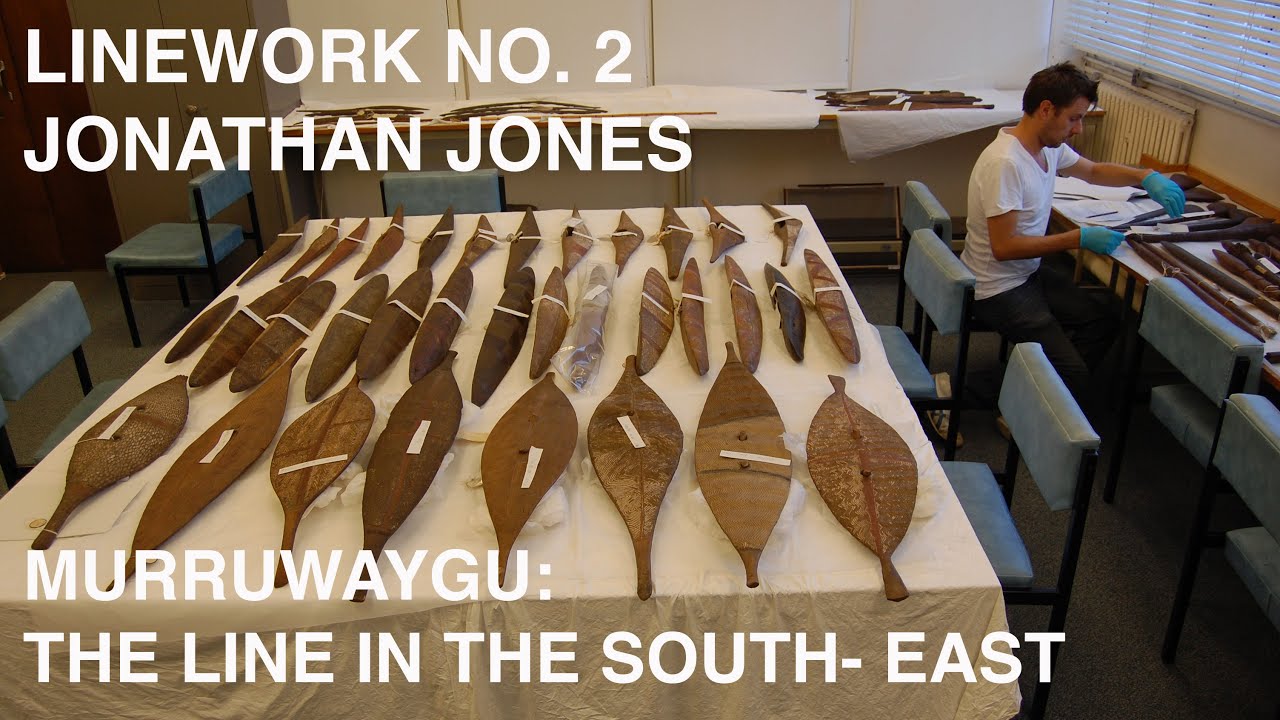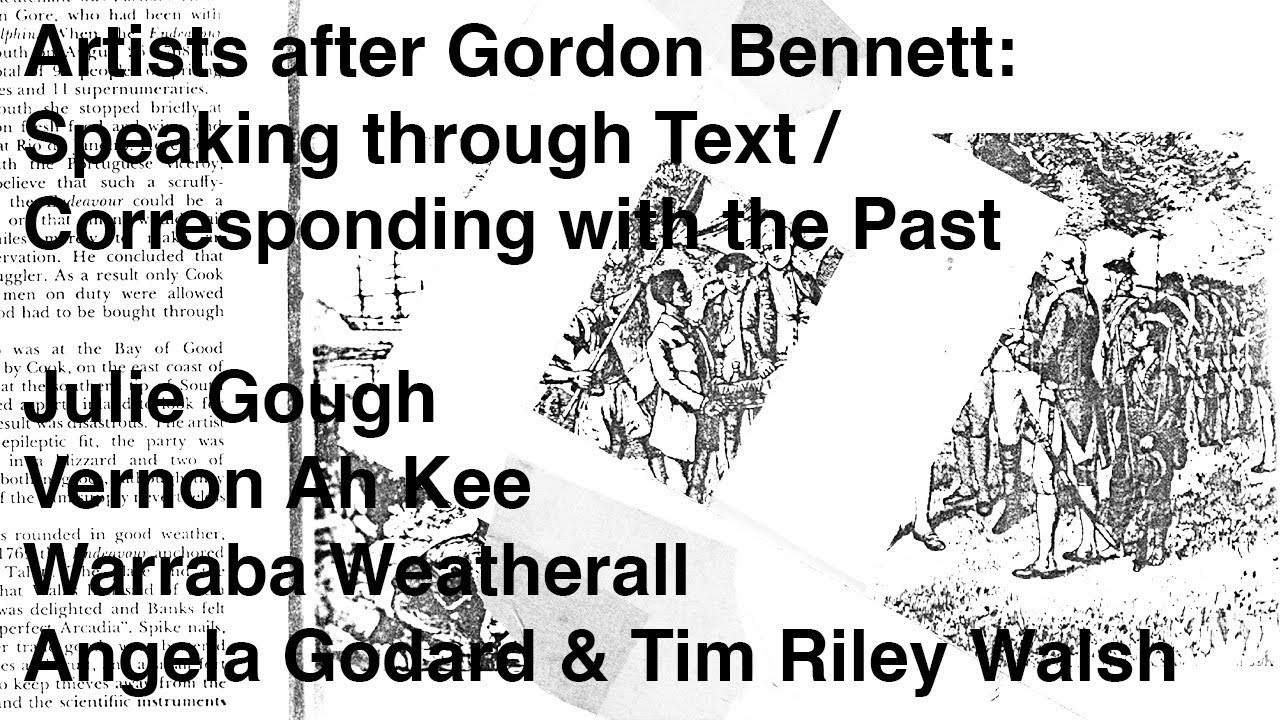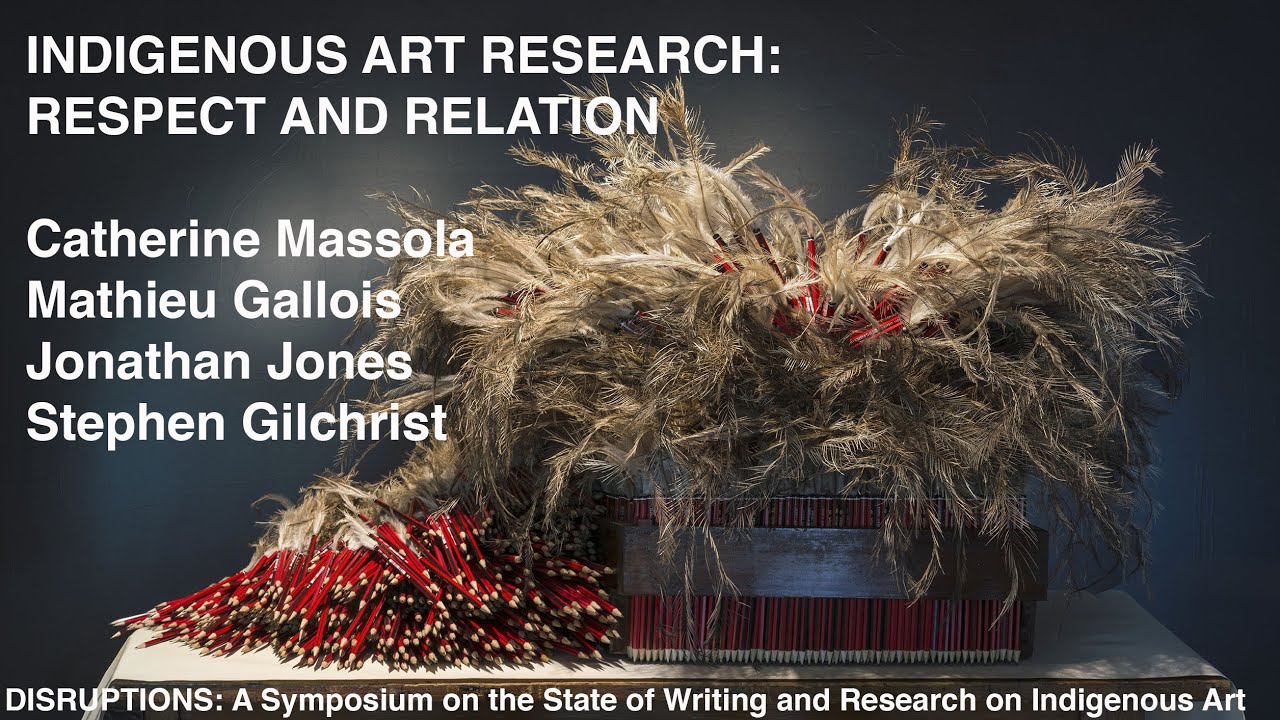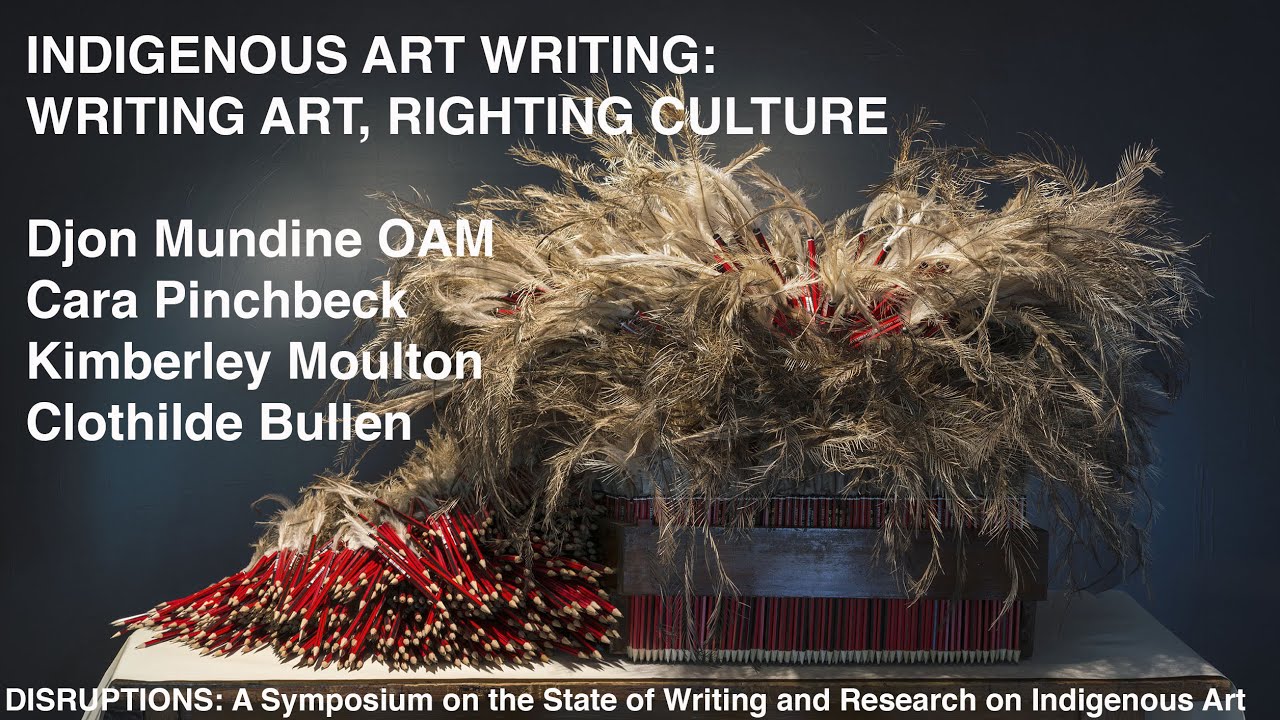Linework: Lines, Lineages and Networks in Indigenous Art

This series explores the rich history of Indigenous linework, from the specific techniques of line-drawing that express Indigenous philosophies of self and community, to the methodologies of storytelling and network building that join Indigenous people to their past, and to other Indigenous communities across Australia and the world.
The Power Institute’s collaboration with Julie Nagam and Gerald McMaster is made possible by a grant from the Terra Foundation.
Linework Scholars
Vernon Ah Kee is a member of the Kuku Yalandji, Waanji, Yidinji and Gugu Yimithirr peoples. His multi-faceted practice includes works that range from large-scale drawings of his ancestors to hard-hitting text-based works and installations. Through clever puns and plays on words and objects, Ah Kee fuses the history and language of colonisation with contemporary black/white political issues to expose degrees of underlying racism in Australian society.
Clothilde Bullen is Senior Curator, Aboriginal and Torres Strait Islander Collections and Exhibitions at the Museum of Contemporary Art and Board Member, Art Monthly.
Rebecca Conway is Curator ethnography, Macleay collections at the Chau Chak Wing Museum, University of Sydney. She has a background in Aboriginal Australian and Pacific Islands archaeology and has worked with cultural collections in museums for close to 30 years. This includes her current role and a variety of positions at the Australian Museum, Sydney. Rebecca has worked with cultural heritage from Asia, Africa and the Americas, Australia, and the Pacific Islands. As a non-Indigenous curator her primary interest is facilitating the access and involvement of cultural communities in the interpretation and management of their cultural heritage in museums. This work has included repatriation projects, documentation of Indigenous knowledge relating to collections, amplifying Indigenous voices and perspectives in museum histories and contemporary practice, including supporting Indigenous participation in the curation of exhibitions. Most recently this work has taken form in the exhibition, ‘Gululu dhuwala djalkiri: welcome to the Yolŋu foundations’ (2020) and the book, ‘Djalkiri: Yolŋu art, collaborations and collections’ (2021).
Mathieu Gallois is a multi-award winning artist, designer and researcher. In his mid-thirties, Gallois became aware that he knew few Indigenous Australians and little about their culture, history and struggles for self-determination. At the time, he had the good fortune to meet Auntie Joyce Williams, Elder of the Wiradjuri people of central NSW, who took the time to sit with him and communicate the fuller meaning of myriad issues relating to Indigenous Australians. Those talks ultimately lead to Gallois’ thesis on the Aboriginal Flag.
Stephen Gilchrist belongs to the Yamatji people of the Inggarda language group of northwest Western Australia, and is Lecturer of Indigenous Art at the University of Sydney and Deputy Director of The Power Institute. He is a writer and curator who has held curatorial appointments with the Indigenous collections of the National Gallery of Australia (2003-2005), the British Museum (2008), the National Gallery of Victoria (2005-2010), the Hood Museum of Art, Dartmouth College (2011-2013) and the Harvard Art Museums (2012-2016).
Angela Goddard is a curator, writer, Director of the Griffith University Art Museum, and Adjunct Senior Research Fellow at the Queensland College of Art. She is also Chair of University Art Museums Australia, and a Board Member of Sheila: A Foundation for Women in Visual Art.
Julie Gough is an Aboriginal woman from the Briggs-Johnson-Gower family of northern Lutruwita/Tasmania. She is an artist who interrogates colonial history on Aboriginal Country, and a curator of First Peoples Art and Culture at the Tasmanian Museum and Art Gallery.
Jonathan Jones is a member of the Wiradjuri and Kamilaroi nations of south-east Australia, an artist, curator and researcher. As an artist he works across a range of mediums, from printmaking and drawing to sculpture and film, to create site-specific installations and interventions that engage Aboriginal practices, relationships and knowledge. Jones’s work champions local knowledge systems, is grounded in research of the historical archive and builds on community aspirations. At the heart of his practice is the act of collaborating and many projects have seen him work with other artists and communities, including with Dr Uncle Stan Grant Senior. Jones has exhibited both nationally and internationally, and his work has been collected by state, national and international institutions. In 2016 Jonathan presented the 32nd Kaldor Public Art Project, ‘barrangal dyara: skin and bones’, at the Royal Botanic Garden Sydney, and in 2018 he was awarded the Sidney Myer Creative Fellowship in the field of visual arts.
Catherine Massola works as a curator, community developer, academic and arts administrator in Aboriginal communities, art centres, institutions and community organisations. Massola spent six years in Warmun; coordinating the Art Centre Gallery and conducting research. Her PhD research investigated the intended and unintended roles of art in the creation and maintenance of value, culture and agency, informal learning processes and the historic and contemporary impact of Westernisation.
Gerald McMaster is a curator, artist, author, professor, and director of the Wapatah: Centre for Indigenous Visual Knowledge, OCAD University (Toronto). With over 30 years of international work and expertise in contemporary art, critical theory, museology and indigenous aesthetics, he has worked at the Art Gallery of Ontario, Smithsonian National Museum of the American Indian, and the Canadian Museum of Civilization. As curator, he represented Canada at the Venice Biennale (1995) and the 16th Venice Architecture Biennale (2018). In 2012 he was Artistic Director to the 18th Biennale of Sydney (Australia). His most recent book Iljuwas Bill Reid: Life & Work was published in 2020. McMaster is a nêhiyaw (Plains Cree) and a citizen of the Siksika First Nation.
Kimberley Moulton is a Yorta Yorta curator, writer and Senior Curator, South-Eastern Aboriginal Collections at Museums Victoria and Artistic Associate for RISING Festival Melbourne. Kimberley works with knowledge, histories and futures at the intersection of First Peoples historical and contemporary art and making and her practice includes anti-colonial curatorial methodologies, working to extend the paradigm of what exhibitions and research in and out of institutions can be for and with First Peoples communities. Kimberley has held curatorial and community arts development roles at Melbourne Museum for over ten years and was an assistant curator for the permanent First Peoples Exhibition at Melbourne Museum. In 2018 she was Museums Victoria lead curator for Mandela: My Life, an exhibition on Nelson Mandela at Melbourne Museum in partnership with the Nelson Mandela Foundation Johannesburg and IEC exhibitions. Kimberley has led research in collections across museums and galleries in cultural heritage and First Nations contemporary art including the British Museum, Oxford University Pitt-Rivers Museum, Cambridge University, The Met NYC, and the Smithsonian Institutes Washington D.C. Independently Kimberley has written extensively for publications worldwide and held curatorial and writing research fellowships across Europe, UK, U.S.A, South Asia and North America. In 2019 Kimberley won the Power Institute Indigenous Art Writing Award and in 2020 was the co-editor for Artlink Indigenous 40.2 Kin Constellations: Languages Waters Futures. She is Alumni of the Wesfarmers Indigenous Leadership Program National Gallery of Australia and Director on the board Barpirdhila Foundation, Deputy Chair of the Shepparton Art Museum board, member of Australian Museums and Art Galleries Indigenous Road Map Advisory and member of the board for the International Art Critics Association Australia.
Djon Mundine OAM is a proud Bandjalung man from the Northern Rivers of New South Wales. Mundine is a curator, writer, artist and activist and is celebrated as a foundational figure in the criticism and exhibition of contemporary Aboriginal art. Mundine has held many senior curatorial positions in both national and international institutions, some of which include the National Museum of Australia, the Museum of Contemporary Art, Art Gallery of New South Wales and Campbelltown Art Centre. Between the years 1979 and 1995, Mundine was the Art Advisor at Milingimbi and curator at Bula-bula Arts in Ramingining, Arnhem Land for sixteen years. Mundine was also the concept artist/ producer of the ‘Aboriginal Memorial’, comprising 200 painted poles by forty-three artists from Ramingining, each symbolising a year since the 1788 British invasion. The Memorial was central to the 1988 Biennale of Sydney and remains on permanent display at the National Gallery of Australia in the main entrance hall. In 1993, Mundine received the Medal of the Order of Australia for service to the promotion and development of Aboriginal arts, crafts and culture. Between 2005 & 2006 Mundine was resident at the National Museum of Ethnology (Minpaku) in Osaka, Japan as a Research Professor in the Department of Social Research and is a PhD candidate at National College of Art and Design, University of NSW. Djon Mundine OAM also won The Australia Council’s 2020 Red Ochre Award for Lifetime Achievement and is currently an independent curator of contemporary Indigenous art and cultural mentor.
Bernice Murphy was the first Curator of Contemporary Art at the AGNSW Sydney (1979–83); then committed for 15 years, in various roles, to the development of Sydney University’s Power Gallery of Contemporary Art into the MCA Sydney – finally becoming the second Director of the MCA in the late 1990s. A commitment to the exhibition and building of collections of Aboriginal art as contemporary art, and the enabling of First Nations curatorship, have been advocated in her exhibitions, writing and museum work since the early 1980s.
Cara Pinchbeck is Senior Curator, Aboriginal and Torres Strait Islander Art at the Art Gallery of New South Wales.
Matt Poll is Assistant Curator of Indigenous Heritage collections of the Chau Chak Wing Museum, and also works as the repatriation project officer at the University of Sydney. Previously Matt worked as Artistic director of Boomalli gallery In Leichhardt and his recent curatorial work includes new exhibitions Chau Chak Wing Museum include the exhibitions ‘Gululu dhuwala djalkiri: welcome to the Yolŋu foundations’ and ‘Ambassadors’. Matt also has experience in relation to Aboriginal public art facilitation in Sydney including senior involvement in ‘the gathering space’ and as a project artist for the artwork ‘tools of knowledge’ at the new Westmead hospital redevelopment project (2020).
Tim Riley Walsh is a curator and art historian. Tim is currently Curator in Residence, Gertrude, Naarm/Melbourne and has previously worked in gallery management, communications, and programming roles at Milani Gallery, Camden Art Centre, and the Queensland Art Gallery | Gallery of Modern Art. Tim is the Australia Desk Editor for ArtAsiaPacific, Hong Kong, and a previous contributor to Frieze, Art Monthly Australasia, Art + Australia,Apollo, OSMOS, and Artlink.
Warraba Weatherall is a Kamilaroi visual artist, Lecturer at Griffith University and DVA candidate, who is currently based in Meanjin (Brisbane). Warraba’s artistic practice has a specific interest in archival repositories and structures, and the life of cultural materials and knowledges within these environments. Warraba is also a lecturer for the Contemporary Australian Indigenous Arts (CAIA) degree at Griffith University’s, Queensland College of Art. Warraba is passionate in shifting cultural norms within the Australian visual arts sector and contributes to the sector through artistic practice, education and curation. Warraba has exhibited works across Australia, most recently; Gertrude Contemporary (Melbourne, 2021), Griffith University Art Museum (Brisbane, 2021), QUT Art Museum (Brisbane, 2021), Institute of Modern Art (Brisbane, 2021), Milani Gallery, Carpark (Brisbane, 2019), Ambush Gallery (Canberra, 2019), NERAM (Armidale, 2018) and MAGNT (Darwin, 2017).
About the Series
Over the past 40 years, Indigenous art has found itself at the centre of debates about contemporary art. In response to the ongoing movement towards decolonization, institutions like the Power Institute have sought to rethink the lines that delimit our understandings of art making, thinking, and curating.
Indigenous people have, of course, long been drawing their own lines, in practices that preceded and survived colonial settlement. This lecture series seeks to explore the richness of Indigenous linework.
‘Linework’ evokes several meanings. For the many Indigenous peoples across Australia, the line has long been a technique for materialising and transmitting complex philosophies of law, ecology, identity, and community. Just like the dot, the line links a diversity of Indigenous art practices, from the minty’tji of Yolŋu artists in Australia’s Top End, to the murruwaygu used by Aboriginal male artists in Australia’s south-east (as researched by Wiradjuri and Kamilaroi artist and writer Jonathan Jones).
Linework is also present in Indigenous methods of history telling, and community building. Yorta Yorta writer and curator Kimberley Moulton, among many others, has described the way ‘storyline’ provides a way to re-claim her heritage and objects from the museums that appropriate them. Indeed, Indigenous artists, critics and curators are constantly recovering and inventing new lines of connection to their past, and to other Indigenous peoples across Australia and the world. Such a project is at the heart of the work of Indigenous scholars and curators Gerald McMaster and Julie Nagam.
This series brings together Indigenous voices from across Australia, and the world.
Presented by
Events
Past
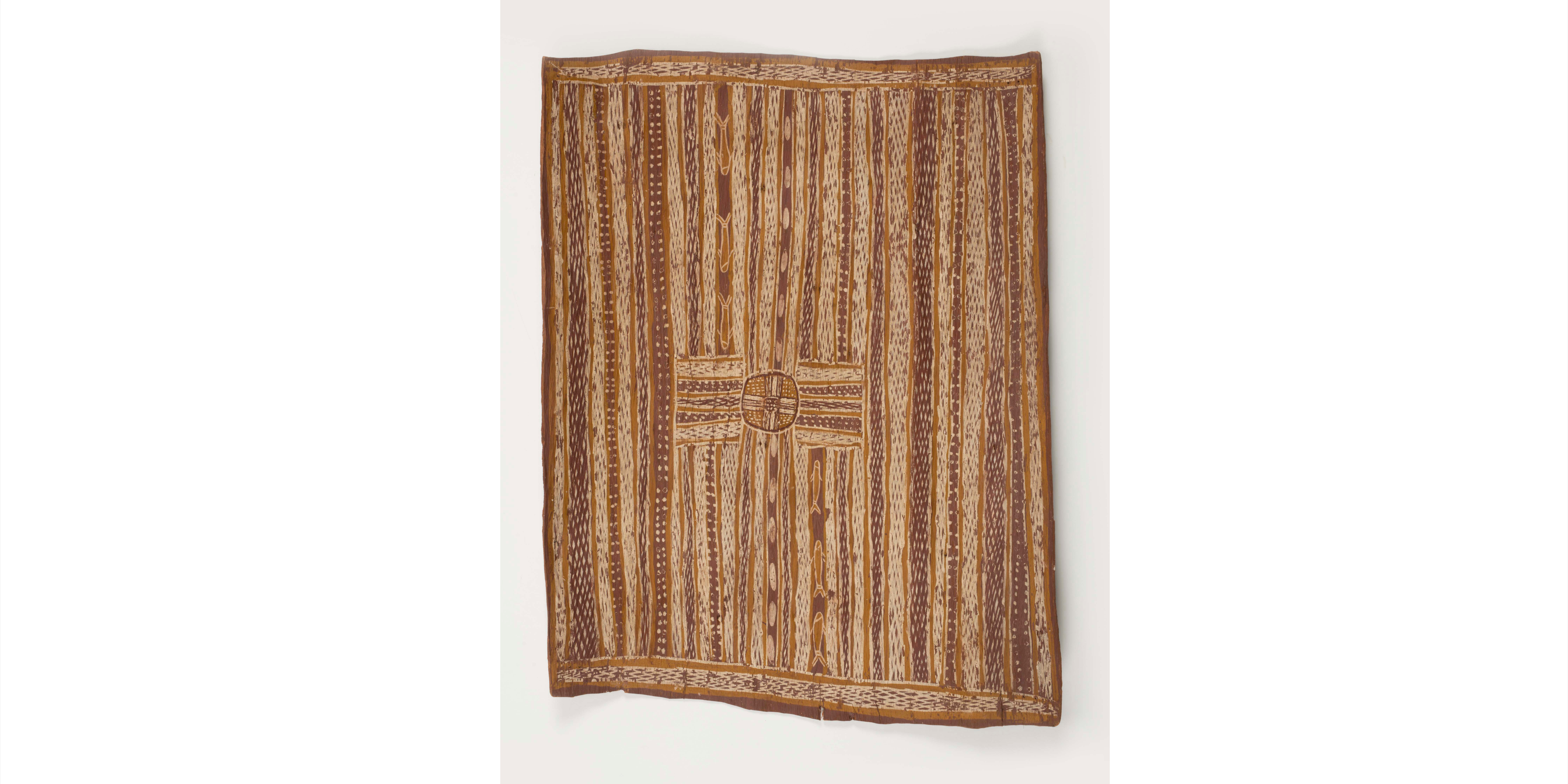
Djalkiri: Histories of Indigenous Linework
The first event in the 2021 Linework series, which took place on 18 March 2021.
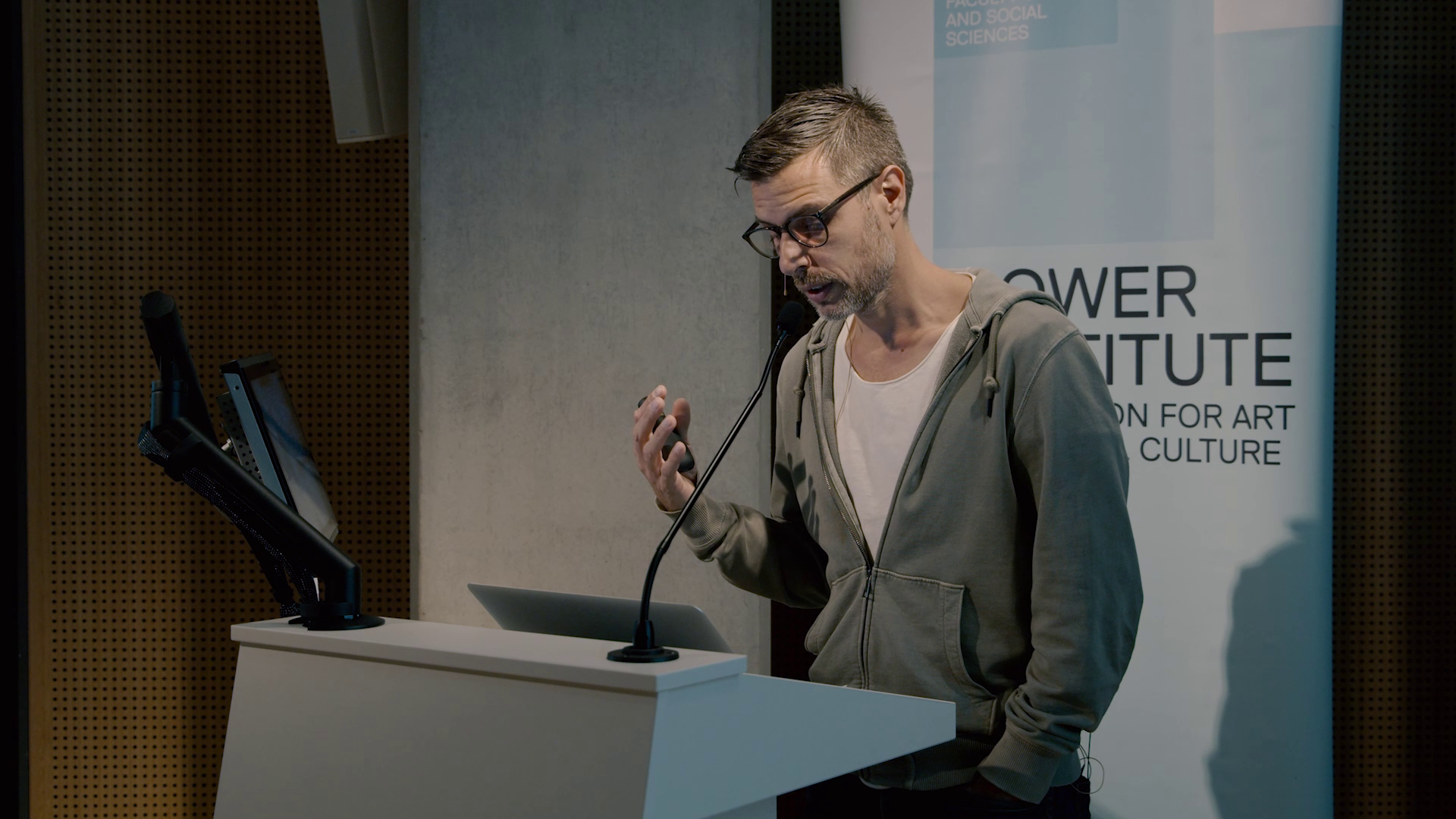
Murruwaygu: The Line in the South-East
The second event in the 2021 Linework series, which took place on 10 June 2021.
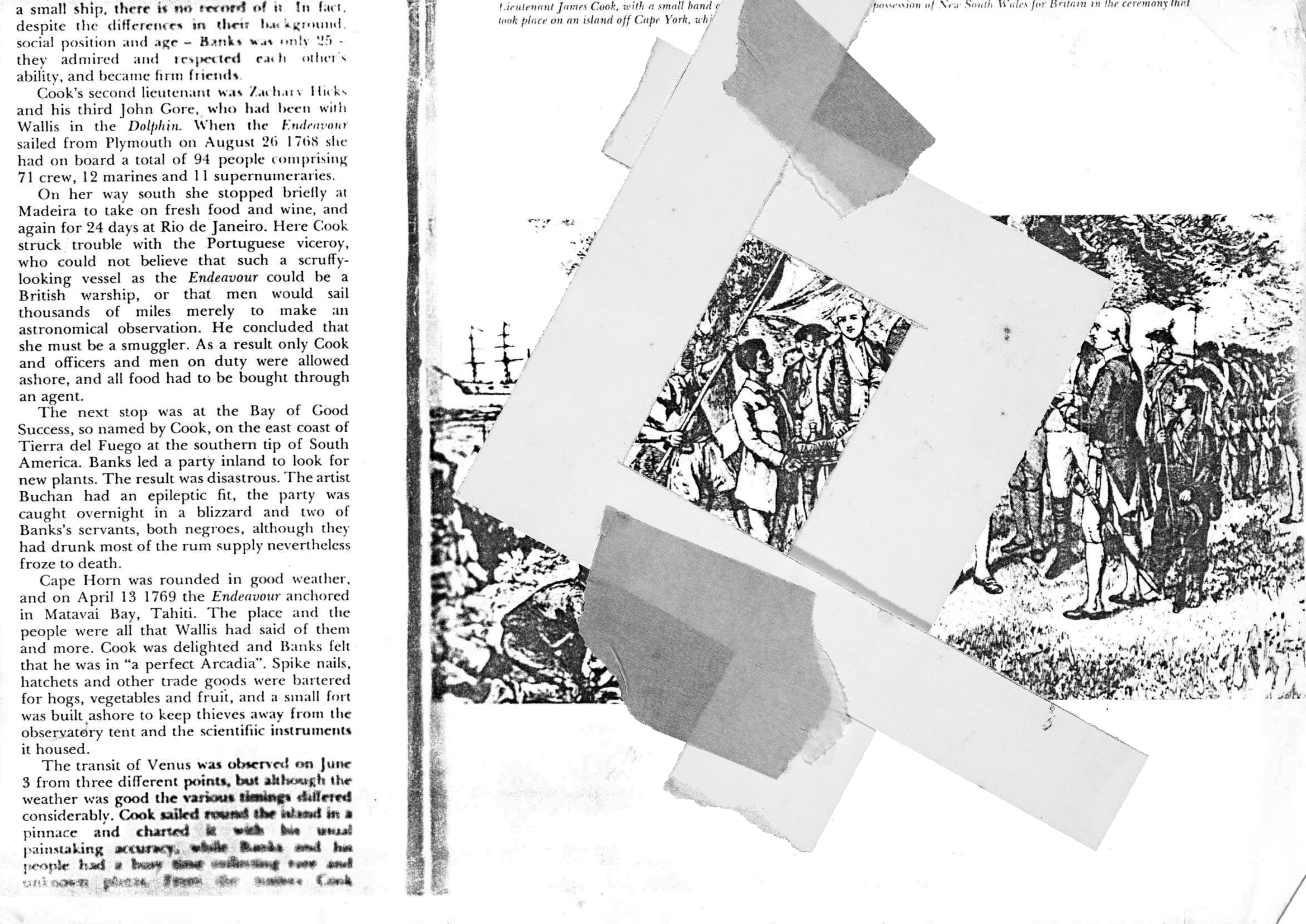
Speaking Through Text / Corresponding with the Past
This event took place on 7 October 2021, as part of the Power Institute’s lecture series Linework: Lines, Lineages and Networks in Indigenous Art.
Artists Vernon Ah Kee, Julie Gough and Warraba Weatherall join the editors of Gordon Bennett: Selected Writings, Angela Goddard and Tim Riley Walsh, to consider Bennett’s indelible impact. Moderated by the Power Institute’s Deputy Director, Stephen Gilchrist.
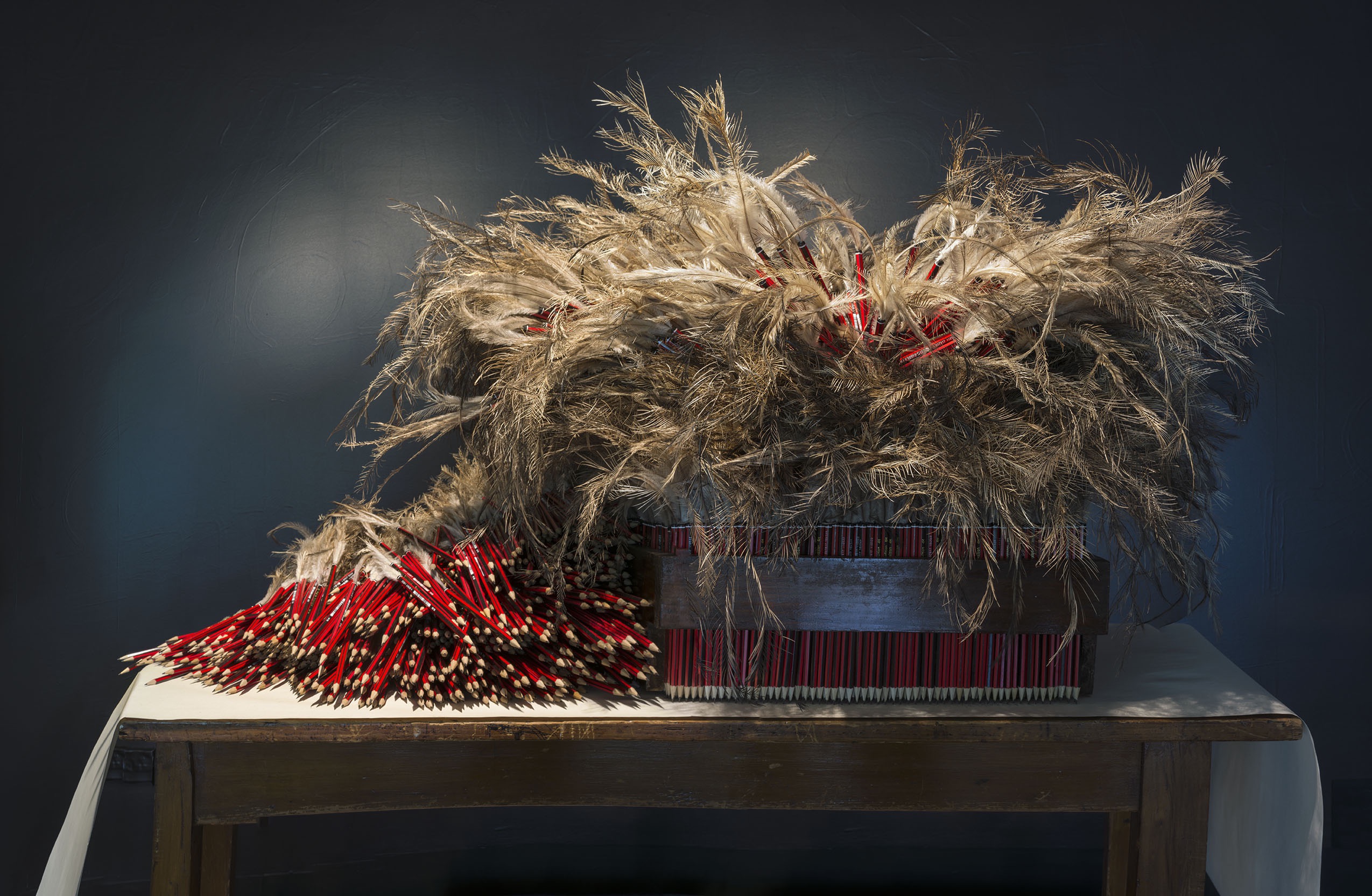
Disruptions: A Symposium on the State of Indigenous Art Writing and Research
This event took place on 13 August 2021, as part of the Power Institute’s lecture series Linework: Lines, Lineages and Networks in Indigenous Art.

